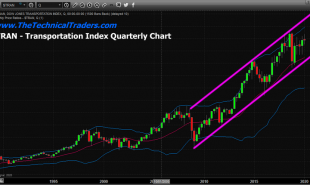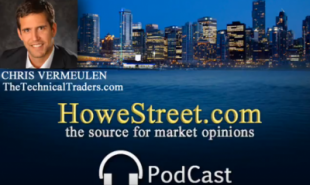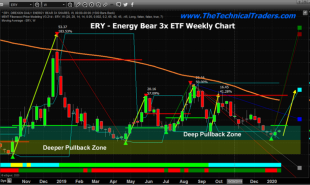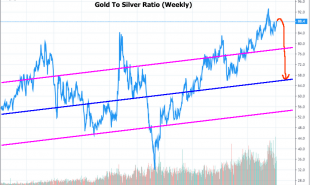
We just read a very insightful post in zerohedge in which the author describes a massive potential payout for someone who recently placed a large option play on in the ViX. Here is his description as quoted in Business Insider.
From Michael Snyder and theeconomiccollapseblog.com:
I want to be very clear about the fact that I do not know what will or will not happen by the end of October. But one mystery investor is extremely convinced that market volatility is going to increase over the next few months, and if he is correct he will make an astounding amount of money. According to Business Insider, the following is how the trade was set up…
- To fund it, the investor sold 262,000 VIX puts expiring in October, with a strike price of 12.
- The trader then used those proceeds to buy a VIX 1×2 call spread, which involves buying 262,000 October contracts with a strike price of 15 and selling 524,000 October contracts with a strike price of 25.
- For reference, bullish call spreads are used when a moderate rise in the underlying asset is expected. Traders buy call options at a specific strike price while selling the same number of calls of the same asset and expiration date at a higher strike.
- In a perfect scenario, where the VIX hits but doesn’t exceed 25 before October expiration, the trader would see a whopping $262 million payout.
We'd like to put a finer point on a couple things that Business Insider said:
The $262MM is the max potential payout if themarket expires at 25 as BI implies. But what about the risk? First off; a BET relates to how much money was laid out. We do not know the amount BET, but assume it was a small amount based on the structure's complexity. The amount at RISK is part of the bet as well. And the trader has real risk here if the market moves below 12 or above 35 (not 25). Frankly, his risk is open-ended in both directions. His VaR is far more than the $262 MM max profit he can make. But that does not factor probabilities or expected payout values. Your bookie would just say " the Odds" of him getting killed are low. Simply put: The trader bet "X" ( likely a small amount) and is risking an additional "Y" (potentially huge) to make up to $262MM (not too shabby).
Drilling down a little more on the structure
This is a "commission bomb" trade usually pitched to large retail saps. But we must say, never this big! He bought a 15 call and financed it by selling a 12 put, and (two) 25 calls. This is commonly called a ratio 3-way. Soft-Porn terms aside, it's been our experience that when either a 3-way or ratio-backspread ( this is a combination of those) is implemented for little to no cost, the position holder is punting and knows little. He may know more than us directionally perhaps, but little about option risk. Otherwise he'd have done a much less complex trade to create a similar risk/reward payout.
This person is bullish on volatility, but not that bullish. He is betting on a move higher in the VIX, yet is net short Call options. So, if he is right directionally, but volatility overperforms his expectations, he loses. And if the VIX goes down, he loses. Here is his P&L data on expiration day
-
He incurs no profit or loss between 12 and 15 in the VIX except the debit or credit incurred by implementing the position
-
He loses money if the VIX goes below 12 with no lower bound (Negative volatility? UNPOSSIBLE)
-
He makes money if the VIX is between 15 and 35 (not 25)
-
His max profit potential is if the VIX is at 25 on expiration day
-
He begins to lose money above 35 in the VIX with no upper bound
Keep it Simple Stupid
Bear in mind that before expiration an adverse move in the market could trigger a margin call. And it has been our experience that some people who are obsessed with not laying out any money to implement trades (AKA CHEAP) are often undervaluing the risk that comes along with being cheap. They look at odds and not VAR of trades. There are others who do know their shit option wise. They put on posiitons and let their underlingsmanagetheday to day risk. They just don't want to spend any money, as this trade is a hobby, and have really good trade flow info. The thing is, those that do know their shit in options do not put on such complex trades with so many variables. We are going with a possible good idea implemented in a dumb trade. At least the broker was happy.He could have just sold a put spread and bought a call creating a better risk/ reward profile in exchange for maybe laying out some premium. But to each his own
VIX as Fear Greed Indicator
Generally speaking, the VIX will rise given a move in stocks lower. That is due to unhedged equity longs who rush in like lemmings to buy Puts in a stock wash out. Conversely, the VIX will generally drop in an equity rally as longs sell more Calls to create dividends. The VIX is not a fear/ greed index. It is an indicator of dominant market players who are underhedged. Skew tells you that. VIX only tells you likely speed of a fall or rally, not which way stocks will go. Anyone who tells you that is just being idioti.
That does not negate the efficacy of being long the VIX as a hedge against equity longs. The author is not wrong at all in his conjecture that this person is in fact likely ot be proftiable in a stock market washout. Of course the VIX could always be stomped on by the PPT to keep portfolio hedges cheap and thus subsidize stock fund managers. But hey, the government doesnt manipulate markets.
The VIX as directional indicator is simply Bullshit. But skew... that is a different story for a different time- VBL
Option geeks refer to the Skew/ Vol relationship like this: "SKEWNESS AS AN INDICATOR OF STOCHASTIC PROCESSES IN VOLATILITY".
Volatility should expand in the direction of the skew. And the stock market's options are definitely a put skew market. Thus a washout in stocks increases stock volatility (VIX). In this case the stock market is dominated by stock longs who buy puts and sell calls to "collar" their risk. To wit: Call selling is not bearish. It is a sign that stock longs are less likely to to be selling their stock UNLESS it rallies.
Additionally, we have no idea if this trade is some convoluted hedge for an existing equity position. So winning may be losing for the portfolio manager here.
To quote the author again:
I will be watching to see what happens. If this mystery investor is correct, it will essentially be like winning the lottery.
That is the most likely scenario, unless he also happens to be long $1BB of stock... then all "Bets" are off
Here is an incredibly rudimentary P&L Graph for which we have fired the intern who created it.
- Blue lines represent the option structure at expiration.
- Brown lines represent the X and Y axes.
- X axis represents option strikes 12, 15, 25, 35
- Y axis is Profit above the X axis, loss below the X axis.
Not pictured: the massive commissions made by whoever brokered and/or cleared this monstrosity of hidden risks
Read more by Soren K.Group








